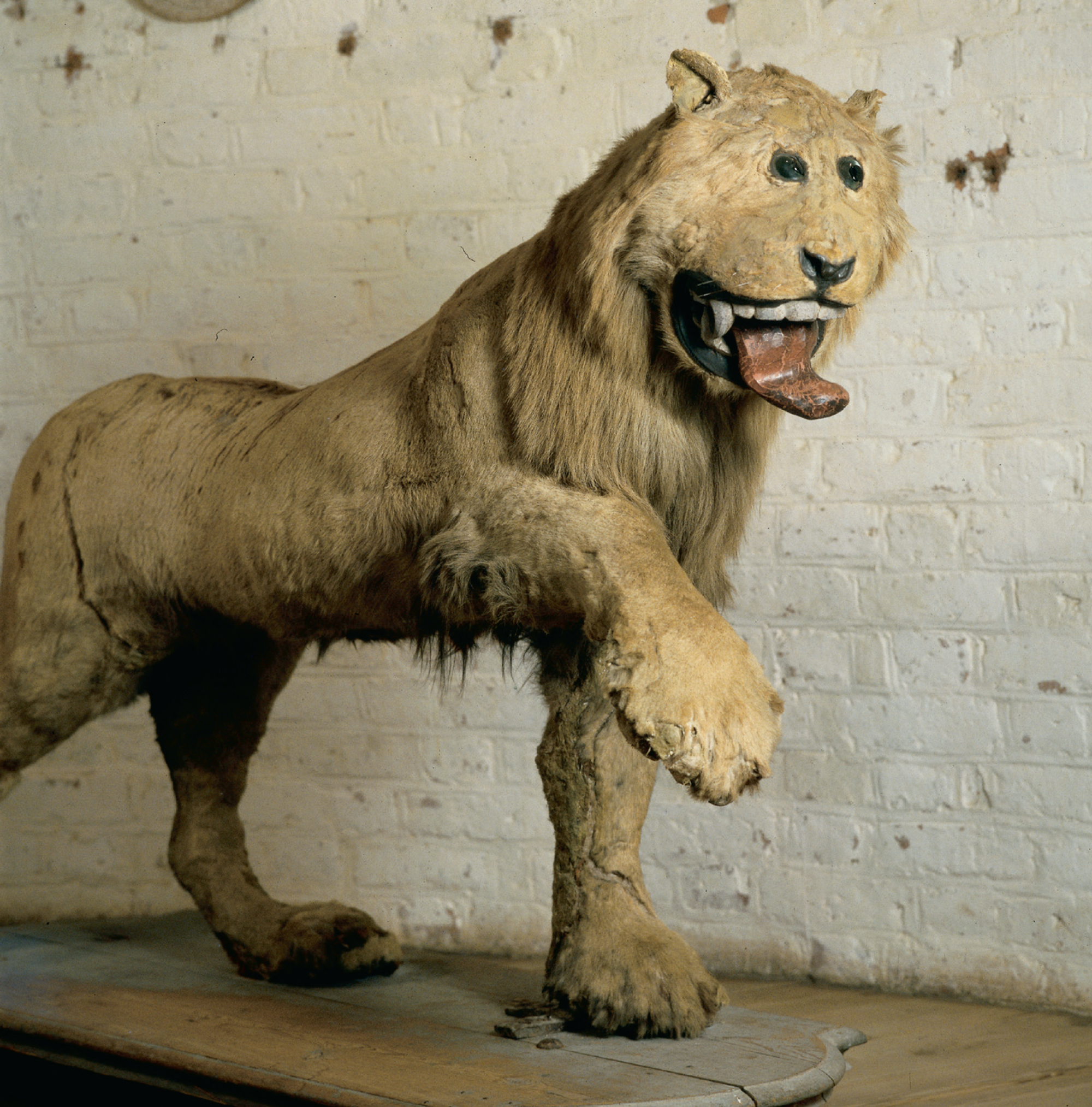The Lion in the Swedish Winter
Taxidermy trouble
Mats Bigert

The royal castle of Gripsholm to the south of Stockholm houses the oldest lion taxidermied in Sweden. The tongue and teeth are made of wood and the eyes are two dull, soulless pieces of glass stuck with glue.
The taxidermist, unfamiliar with lions, copied the pose from two bronze mythological lions standing outside the royal castle. The hand that in the bronze lions rested on a polished granite sphere now hovers awkwardly in mid-air, as if the lion were offering its hand to be kissed.
The living lion arrived in Sweden in 1731 as a gift to Fredrik I from the Algerian Bey. In 1729, the Swedish king had signed a treaty with the Algerian ruler to protect Swedish merchant ships from sea pirates off the coast of Algeria. To seal the treaty, gifts of guns, mast poles, and anchors had been offered to the Algerian ruler. He in turn offered the lion to the Swedish king.
The lion’s arrival posed a practical problem for the court architect, Carl Hårleman, who suggested that an “Algerian menagerie” be built in a central square in town. The lion was finally housed, however, in the old lion’s den on the royal hunting grounds where earlier lions had been housed. A lion from Prague that had arrived after the Peace of Westphalia in 1648 had been placed there and received brutal treatment from the bears and oxen. The lion’s feeble display of courage had surprised everyone.
It is possible that the Algerian lion met with a similar fate as it fought an uneven fight against the Nordic beasts of this barren and cold climate. Its final incarnation would then reflect the Swedes’ disappointment over its lack of courage and its failure to live up to own symbolic character. Its front paw, then, is in fact only asking for mercy and forgiveness.
Mats Bigert is one half of the Stockholm-based art duo Bigert & Bergström. He is Cabinet’s editor-at-large in Sweden.
Spotted an error? Email us at corrections at cabinetmagazine dot org.
If you’ve enjoyed the free articles that we offer on our site, please consider subscribing to our nonprofit magazine. You get twelve online issues and unlimited access to all our archives.